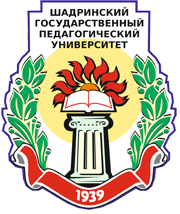Кластерное взаимодействие в обучения детей с ОВЗ в условиях начальной школы
Cluster interaction in teaching children with disabilities in primary schools
Аннотация
В статье рассматривается проблема кластерного взаимодействия в обучении младших школьников с ограниченными возможностями здоровья. Анализ результатов исследования, проведенного в рамках написания статьи, позволил авторам сформулировать ключевые проблемы, с которыми сталкиваются учителя начальной школы при работе с особыми детьми. Обоснована актуальность кластерного взаимодействия в рамках решения исследуемой проблемы. Особое внимание авторы уделяют разработанной модели кластерного взаимодействия обучения младших школьников с ОВЗ. Выделены структурные компоненты данной модели, которые располагается в двух плоскостях. Первая плоскость содержит три основных компонента: педагогический, психологический, методический. Вторая плоскость включает несколько блоков: субъектный, задачно-целевой, содержательный, организационно-деятельностный, рефлексивный и блок условий реализации данной модели. Более подробно авторы останавливаются на раскрытии структурных блоков расположены во второй плоскости. Каждая плоскость кластерной модели включает в себя различных субъектов, реализующих ее. Авторы подчеркивают, что траектория функционирования образовательного кластера, зависит от психологически комфортных взаимоотношений между отдельными его компонентами и субьектами на определенном временном этапе. Компоненты кластерной модели могут претерпевать изменения или строится их различные сочетания, в зависимости от решаемых целей и задач, также меняется и состав участников. В статье отмечается, что становление кластерной модели обучения младших школьников с ОВЗ представляет собой длительный процесс, предполагающий интеграционное взаимодействие всех его субъектов.
Abstract: The article deals with the problem of cluster interaction of primary school students with disabilities. Analysis of the results of the research conducted during the writing of the article allowed the authors to formulate professional deficits of primary school teachers when working with special children. The importance of cluster interaction within solving the problem under study is proved. The authors pay special attention to the developed model of cluster interaction of primary school students' education with health limitations. The structural components of this model which are located in two planes are highlighted. The first plane contains three main components: pedagogical, psychological, and methodological. The second plane includes several blocks: subject, task-target, content, organizational-activity, reflexive, and a block of conditions for the implementation of this model. In more detail the authors focus on the disclosure of structural blocks located in the second plane. Each plane of the cluster model includes different entities that implement it. The authors emphasize that the way of interaction within an educational cluster is built in the form of a trajectory of creating mutually comfortable relations between its individual components in a certain period of time. The components of the cluster model may change or different combinations of them are being built, depending on the goals and objectives to be solved, and the composition of participants also changes. The article notes that the formation of a cluster model of teaching primary school children with disabilities is a long process involving the integration of all its subjects.






